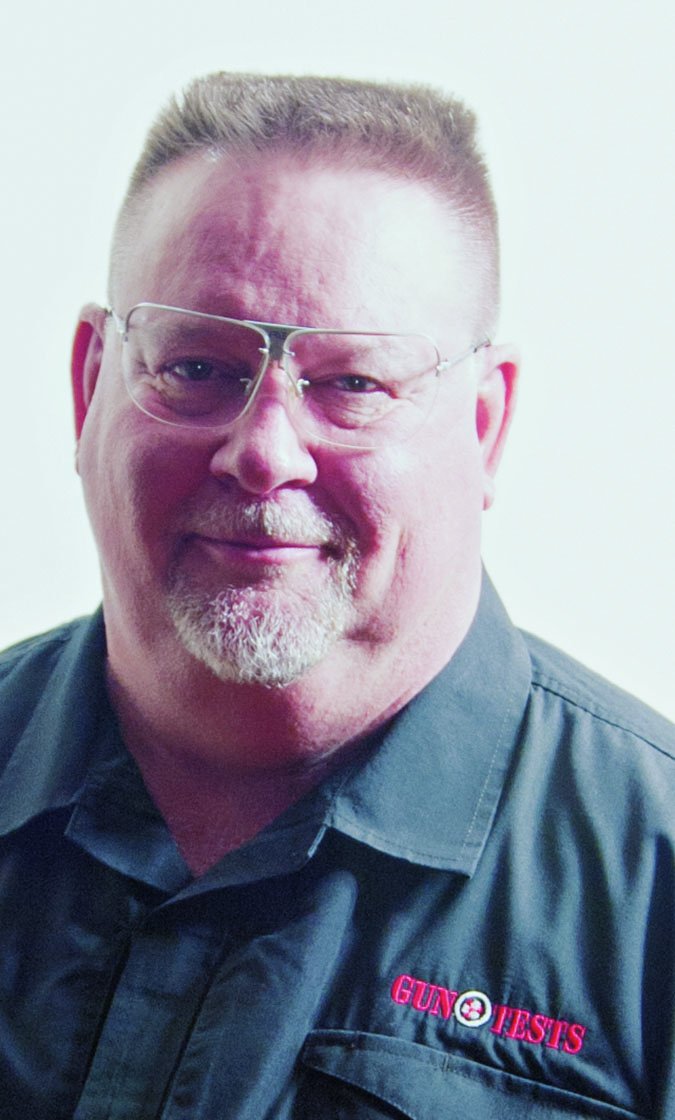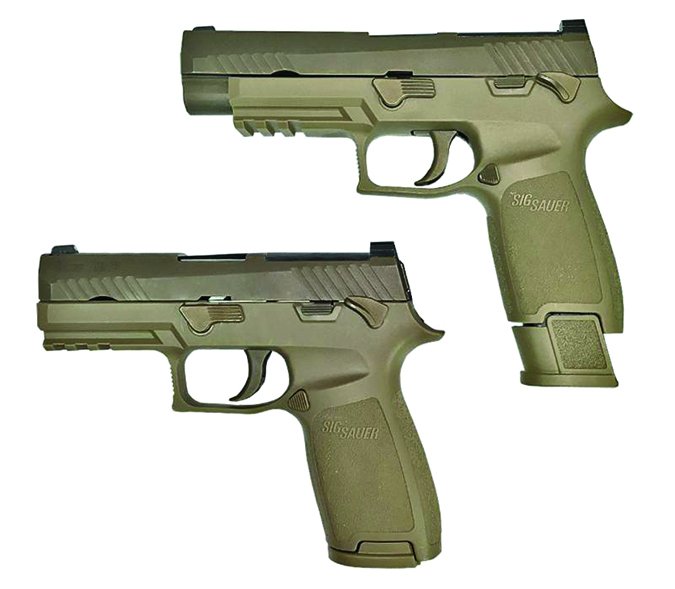
The U.S. Army has selected the SIG Sauer Model P320 to replace the Beretta M9 service pistol currently in use since the mid-1980s.
“I am tremendously proud of the Modular Handgun System Team,” said Army Acquisition Executive Steffanie Easter in an Army release about the pistol. “By maximizing full and open competition across our industry partners, we truly have optimized the private-sector advancements in handguns, ammunition, and magazines, and the end result will ensure a decidedly superior weapon system for our warfighters.”
Released in 2014, the P320 is a polymer striker-fired pistol with interchangeable grip modules that can also be adjusted in frame size and caliber by the operator.
All pistols will be produced at the SIG Sauer facilities in New Hampshire.
The Modular Handgun System (MHS) Program provides for the delivery of both full-size and compact P320s over a period of ten years. All pistols will be configurable to receive silencers and will also include both standard- and extended-capacity magazines.
Ron Cohen, President and CEO of SIG Sauer, said “We are both humbled and proud that the P320 was selected by the U.S. Army as its weapon of choice. Securing this contract is a testimony to SIG Sauer employees and their commitment to innovation, quality and manufacturing the most reliable firearms in the world.”
Not that the Army asked us before making their selection of the P320, but if you’ll recall, we gave the relatively inexpensive SIG Sauer P320 Carry 320CA-9-BSS 9mm Luger, $550, an ‘A’ grade back in the November 2016 issue. From that review conducted by Contributing Editor David Tannahill, we said, “Our specific example is the mid-size P320CA Carry edition. A striker-fired black-polymer-framed 9mm, the P320 is the latest generation of pistol introduced by SIG Sauer in 2014. The P320 uses the same lockup system as the P226 MK25. What makes the P320 unique is its modular design. The core of the pistol is its stainless-steel receiver module, which contains the fire-control group, ejector, ambidextrous slide release, and four slide rails. It is this receiver that is marked with the serial number.”

It is not a long leap to guess that the pistol’s modularity was the reason it got the Army’s nod. We said, “From this core, the user can change the grip frame size and color, slide assemblies, and even change to a limited number of chamberings. (The 9mm, 40 S&W, and 357 SIG calibers are interchangeable. The 45 ACP barrel assembly is not.) The grip options are reasonably priced at $47 from the SIG Store. Complete caliber-conversion kits are a pricier at $400. This modular design brings the user a tremendous amount of ergonomic, economic, and operational flexibility. This can a very real advantage, in that the user can use different setups of the same firearm for recreational shooting, home defense, and concealed carry, while not having to adapt to different triggers and other controls.”
Take, for instance, the very different handfit requirements of a 125-pound woman and a 250-pound man. The P320 offers a lot of variability without a lot of extra cost to ensure each soldier’s pistol fits him or her.
Also from our review, this safety note: “Unlike some striker-fired pistols, the user does not have to pull the trigger to field-strip the gun. This lessens the possibility of a negligent discharge.”
Accessories? The P320 is your Huckleberry: “The frame comes with a three-slot Picatinny rail on the dust cover. The tritium SIG-Lite three-dot sights were universally liked. The SIG P320’s design benefits from many years of industry refinements in ergonomics. Most of the testers liked the grip shape, size and stippled texture. The frame has finger indentations on both sides of the frame that make it easier to reach the trigger and magazine release. The triangular magazine release is nicely sized and reversible and ejected the magazines with vigor. The slide release is ambidextrous, which accommodates both left- and right-handed shooters and allows users with weaker hands to press both sides to release the slide. While the slide was a little loose, all the testers found the slide easy to rack.”
And for training: “The testers found the P320 comfortable to shoot and it created only moderate recoil. One of the male testers found the grip a little loose in his hand, but the rest of the testers found the grip to be a good fit. One of the female shooters noted that the pistol was a natural pointer for her. The good sights, comfortable grip, and improved trigger may all have been factors in the excellent shooting results shown by the P320. This P320 was second fastest in the speed drills with an elapsed time of 3.48 seconds. The P320 was the most accurate pistol in the test with all three choices of ammunition. The economy 124-grain Sellier & Bellot full-metal-jacket ammunition averaged 3.6-inch groups, with the largest group of 5.4 inches and the smallest group an excellent 1.9 inches. The 124-grain RMS FMJ averaged an even better 3.2 inches, with the largest group being 5.0 inches and the smallest group an amazing 1.0 inches. The Federal 115-grain JHP self-defense ammunition averaged an excellent 2.8 inches, with the largest at 3.2 inches and the smallest at 2.3 inches.”
To sum up: “Our Team Said: Although it was the least expensive pistol in the test, the P320 proved to be the most accurate pistol of the five guns tested. It is also easily the most flexible and ergonomic design in this test. With the different options available, there is very little this pistol could not do within the limits of the cartridge. While all the pistols in this test are quality pistols and scored well, the SIG P320 is the surprise winner.” In the larger game as well, it would seem. Congrats to SIG Sauer for making an affordable, useful firearm for our soldiers.




























